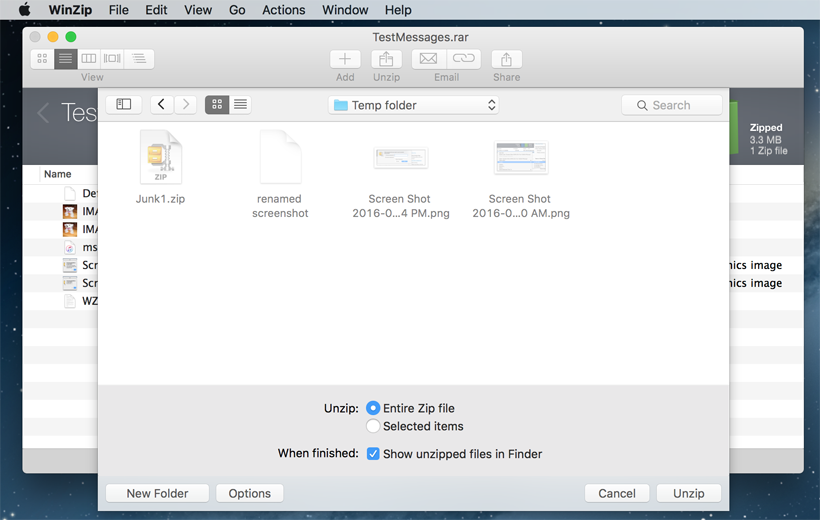Have you ever needed to zip a number of files into separate zip archives? Perhaps you’ve got a number of files in one directory, and they need to be e-mailed to a number of different people. If you use OS X’s built-in Compress contextual menu item (or Create Archive in OS X 10.4), the end result will be one archive containing all the files—which is clearly not what you want.
- Zip Multiple Files At Once
- Zip Into Multiple Files Mac
- How To Zip Multiple Files Mac
- Mac Zip To Multiple Files

Unzip multiple files in same directory on Mac OS X. If you have multiple zip files in a directory and you want to extract all of them at once into that directory, then simply do. Open Spotlight and enter “Terminal”. Then enter the following. # go to the containing folder. Cd / Users / phil / Downloads / folderwithzips. Unzip multiple files in same directory on Mac OS X. If you have multiple zip files in a directory and you want to extract all of them at once into that directory, then simply do. Open Spotlight and enter “Terminal”. Then enter the following. # go to the containing folder. Cd / Users / phil / Downloads / folderwithzips. Jan 10, 2012 If more than one file is being zipped, the archive will be named “Archive.zip”, and if multiple archives are created, they will be named successively “Archive 2.zip” and so on. This works in all versions of Mac OS X, and you can access the compress item option from a right-click with a mouse, control-click with keyboard, or two-finger. Dec 30, 2018 Here’s how it works: zip -r -s 200M archive.zip myfiles/. This will create an archive of all files and subfolders in myfiles, creating a new file every 200MiB (about 10% more than 200MB). We can use K, G and T respectively (for KiB, GiB and TiB, all of which are 10% more than kilobyte, gigabyte and terabyte).
You could compress each file one at a time, of course, but that’s tedious. Instead, put Automator to use with a simple one-command workflow. Open Automator, in Applications, and create a new custom (blank) worfklow. Select the Utilities entry in the left-most column, the drag the Run Shell Script action into the blank work area on the right.
Zip Multiple Files At Once
Set the Pass Input pop-up to “as arguments,” and then replace the existing cat code with this text:

In Finderor on the Desktopselect multiple Folders, then right-clickand select Compress Folders Separatelyfrom under Services. Or after selecting the target Folders, you can also click Finder Services Compress Folders Separatelyfrom the menu bar.
That’s it; that’s the entire workflow. (Please note that this workflow will not work if you select a folder; it’s designed to zip files only.)

Zip Into Multiple Files Mac
In a nutshell, the way this works is that it loops through each file that’s passed to it (that’s the first line), creating a variable (f) that holds the currently-active filename. It then runs the Unix zip command, with the -j option, creating a new zip file that’s simply the current filename with “.zip” appended at the end—the original file is not modified, so this script is perfectly safe to use. The -j option tells zip not to store path information in the zip file; if you leave that option out, when you expand the archive, the system will create a folder structure that exactly matches the full path to the original file.
How To Zip Multiple Files Mac
Now that you’ve written your workflow, it’s time to make it easy to use. Select File -> Save As Plug-In. In the dialog that appears, give your workflow a name (Zip Separately), make sure the Plug-in For pop-up is set to Finder, then click Save. To use your plug-in, switch to the Finder and select a number of files (Command-click to select non-contiguous files). Then Control-click on one of the selected files, and choose More -> Automator -> Zip Separately (or whatever you named your workflow) from the pop-up menu.
Mac Zip To Multiple Files
When the workflow finishes running, you’ll find a zipped copy of each file you had selected, located in the same directory as the original file. This simple workflow makes short work of the task of creating separate zip archive from multiple individual files.